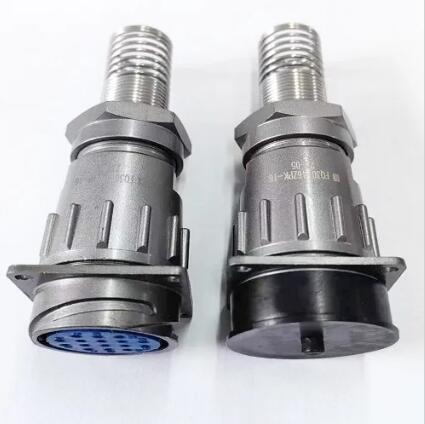The Evolution and Future of Light Rail Sensor Connectors
2024-08-27
The world of urban transportation is evolving rapidly, with light rail systems becoming a cornerstone of sustainable city planning. As these systems become more sophisticated, so too do the components that ensure their efficient operation. One such component is the light rail sensor connector, which has seen significant advancements over the years. In this blog, we will explore the evolution of light rail sensor connectors, the technological innovations that have shaped them, and what the future holds for these critical devices.
A Brief History of Light Rail Sensor Connectors
Light rail systems have been around for over a century, but the technology used in modern systems has advanced significantly, especially in the last few decades. Early rail systems relied on manual monitoring and basic signaling mechanisms, which were prone to errors and inefficiencies. As technology progressed, the introduction of sensors and automated systems revolutionized the way light rail systems were monitored and controlled.
With the rise of electronic sensors in the late 20th century, the need for reliable connectors became apparent. Early connectors were often bulky and susceptible to environmental damage, leading to frequent failures and maintenance issues. However, advancements in materials and manufacturing techniques have led to the development of more robust and reliable connectors.
Technological Advancements in Light Rail Sensor Connectors
The evolution of light rail sensor connectors has been driven by several technological innovations:
- Miniaturization: As sensors became smaller and more sophisticated, connectors had to follow suit. Modern light rail sensor connectors are compact, yet capable of handling high data transfer rates, making them ideal for use in space-constrained environments.
- Enhanced Signal Integrity: Early connectors often suffered from signal degradation due to electromagnetic interference (EMI) and poor design. Today's connectors feature advanced shielding and materials that minimize EMI and ensure that data is transmitted with high fidelity.
- Ruggedization: The harsh operating conditions of light rail systems require connectors that can withstand extreme temperatures, vibrations, and exposure to moisture. Advances in materials science have led to the development of ruggedized connectors that offer long-term reliability in even the most demanding environments.
- Modular Design: To accommodate the diverse needs of modern light rail systems, many connectors now feature a modular design, allowing for easy customization and scalability. This flexibility makes it easier to integrate new sensors and systems as technology evolves.
- Smart Connectors: The latest generation of light rail sensor connectors includes smart features such as self-diagnostics and real-time monitoring. These capabilities allow for predictive maintenance, reducing downtime and enhancing system reliability.
The Role of Light Rail Sensor Connectors in Modern Systems
As light rail systems become increasingly automated, the role of sensor connectors is more critical than ever. Modern light rail networks rely on a vast array of sensors to monitor everything from train speeds and positions to track conditions and passenger loads. The data collected by these sensors is essential for the safe and efficient operation of the system.
Light rail sensor connectors serve as the lifeline for this data, ensuring that it is transmitted accurately and in real-time to the central control systems. This allows operators to make informed decisions, optimize train movements, and respond quickly to potential issues.
Future Trends in Light Rail Sensor Connectors
The future of light rail sensor connectors is likely to be shaped by several emerging trends:
- Increased Connectivity: As the Internet of Things (IoT) continues to expand, we can expect to see even more connected sensors in light rail systems. This will require connectors that can handle higher data volumes and offer greater reliability.
- Wireless Technology: While traditional wired connectors will continue to play a role, there is a growing interest in wireless sensor networks. Future connectors may incorporate wireless capabilities, reducing the need for physical connections and simplifying installation.
- Sustainability: As environmental concerns become more pressing, there will be a greater emphasis on sustainability in connector design. This could include the use of eco-friendly materials, energy-efficient designs, and connectors that are easier to recycle at the end of their lifecycle.
- Enhanced Security: With the increasing reliance on digital systems, the security of data transmitted by light rail sensors will become a top priority. Future connectors may include advanced encryption and security features to protect against cyber threats.
Conclusion
The evolution of light rail sensor connectors is a testament to the rapid advancements in technology that are transforming urban transportation. As light rail systems continue to grow in complexity, the role of these connectors will become even more critical in ensuring safe, efficient, and reliable operations. By staying ahead of emerging trends and embracing new technologies, the next generation of light rail sensor connectors will be well-equipped to meet the challenges of the future.



